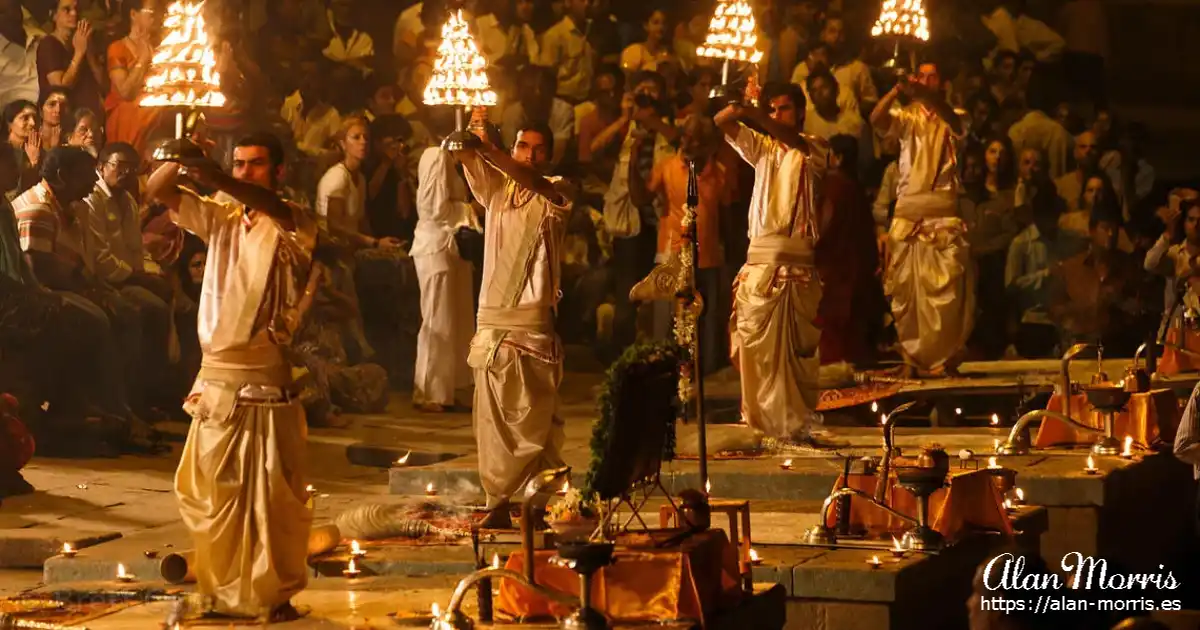The Aarti ceremony is one of the most significant rituals in Hindu worship, symbolising devotion, gratitude, and the removal of darkness. It is performed in temples and homes across India, offering light to deities as an act of reverence and surrender.
The holy river Ganga is truly a divine mother for millions of Indians, and the Ganga Aarti divine light ceremony is filled with bhajans. Prayers at Varanasi are a divine ritual. Participating in the 1000-year-old Ganga aarati at Varanasi, Haridwar, and Rishikesh is a splendid experience. Every evening, thousands of Hindu devotees gather on the bank of this holy river to participate in the Aarti ceremony and to take blessings from Goddess Ganga.
Origins and Meaning.
The word Aarti is derived from the Sanskrit term Ārātrika, meaning "remover of darkness". The ritual has its roots in ancient Vedic fire ceremonies, where offerings were made to the divine through flames. Over time, Aarti evolved into a structured practice, becoming an integral part of Hindu worship.
The Ritual Process.
Aarti is typically performed at the end of prayers or auspicious ceremonies. The ritual involves:
- Lighting a diya (oil lamp) or camphor.
- Waving the flame in a clockwise motion before the deity.
- Singing hymns and bhajans in praise of the divine.
- Accompanying the ceremony with bells, drums, and conch shells.
- Passing the flame among devotees, who place their hands over it and touch their foreheads to receive blessings.
Types of Aarti.
Aarti is performed at different times of the day, each with a unique significance:
- Mangala Aarti – Before sunrise, marking the deity’s awakening.
- Shangar Aarti – Early morning, after dressing the deity.
- Rajbhog Aarti – Midday, following the offering of the main meal.
- Sandhya Aarti – At sunset, the most popular Aarti, symbolising gratitude for the day.
- Shayan Aarti – Late evening, before the deity rests.
Spiritual Significance.
The Aarti ceremony serves as a symbolic surrender to the divine, reminding devotees to stay vigilant against worldly distractions. The flame represents purification, while the act of waving light signifies dispelling ignorance and embracing spiritual wisdom. The ritual fosters a sense of community and devotion, bringing worshippers together in a shared spiritual experience.
Aarti in Modern Hinduism.
While traditionally performed in temples, Aarti has adapted to contemporary practices. Many devotees conduct virtual Aarti ceremonies, allowing participation from anywhere in the world. Despite modernisation, the essence of Aarti remains unchanged: a heartfelt offering of light, love, and devotion. The Hindu Aarti ceremony is more than just a ritual; it is a sacred moment of connection between devotees and the divine, illuminating the path to spiritual enlightenment.
